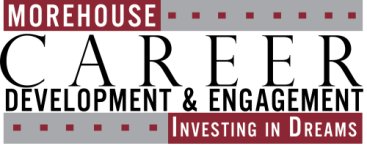Debunking 5 Common LinkedIn Myths with Vanguard
Do you have a LinkedIn profile? If the answer is no, what’s holding you back? In recent years, there has been a lot of buzz around the misconceptions of engaging on this social network. In this blog, we set the record straight and debunk five common myths about LinkedIn. Following this read, we hope that you too will see the benefits that LinkedIn has to offer.
1. I already have a resume prepared for potential employers, so there is no need for me to create a profile.
Truth: Most recruiters leverage LinkedIn as a primary tool to source and research talent. While a resume is necessary when applying to jobs, it’s not something employers can easily find before you apply. By joining the LinkedIn community, you have an opportunity to amplify your personal brand in a unique way.
Tip: In order to effectively kick start your brand on social media, consider taking the following actions when creating your profile:
1) Post a flattering and professional photo of yourself and add a background image.
2) Include a summary that highlights your background and areas of professional focus.
3) Outline your educational and work-related experiences and skills. Include descriptions where applicable and frame them like you would an elevator pitch.
4) Consider adding media work samples that you’re proud of. This will catch a viewer’s eye.
2. LinkedIn is only used to search for new career opportunities and I’m happy in my job!
Truth: While LinkedIn aims to help people find jobs, that is not its sole purpose. LinkedIn should be used to establish a professional brand (as mentioned above) and network. It also serves as an educational resource. Not only will LinkedIn feed you content that is tailored to your skills and areas of professional interest, your network will also share content that will aid in your personal development.
Tip: Consider folks who are in and outside of your immediate circle that would make strong professional connections. These should include but are not limited to:
1) Colleagues within and outside of your department
2) People within volunteer groups you’re a part of
3) Friends and family outside of work
4) Alumni of schools or organization you’ve belonged to
5) Influencers in your field or areas of interest
Connect with these individuals and learn from one another! Further, if you’re happy in your role and at your company, you should share your experiences with your LinkedIn network in an effort to attract more top talent into your organization.
3. If I sign up for LinkedIn, recruiters will be knocking down my door.
Truth: It is likely recruiters will request to connect with you and share opportunities that are currently available at their firm. That being said, this doesn’t happen every hour on the hour and in most cases, it won’t even be a daily occurrence. Regardless, you can pick and choose who to respond to based on your comfort level.
Tip: Take ownership of your professional network. If someone requests to connect with you and you’re not interested, hit the ignore button. They will not be notified of your decision and shouldn’t take it personally.
4. I should not connect with anyone I have not met in person.
Truth: Just because you have not met with an individual in person does not mean you cannot establish a connection. It’s possible you have mutual connections and that can serve as a conversation starter. Plus, if they’re in a similar industry, they’re probably sharing thought leadership and intriguing industry updates.
Tip: Connecting gets easier the more you do it. While you can simply hit the connect button without an additional note, the chances of someone accepting your invitation increases if you reach out in a more personal way.
5. What if my boss sees that I am on LinkedIn? I’m totally being disloyal.
Truth: Totally not. It is becoming more common among employers to encourage their employees to join LinkedIn. Chances are, your manager is on the social network for reasons similar to your own.
Tip: If you feel conflicted, connect with your boss on LinkedIn or mention the subject in a 1:1 setting. In doing so, this shows that you have nothing to hide. Plus, if you’re using LinkedIn as a developmental tool and a means to get external perspective, your manager will be pleased when you take the initiative to share relevant articles or key learnings with colleagues on the team.
